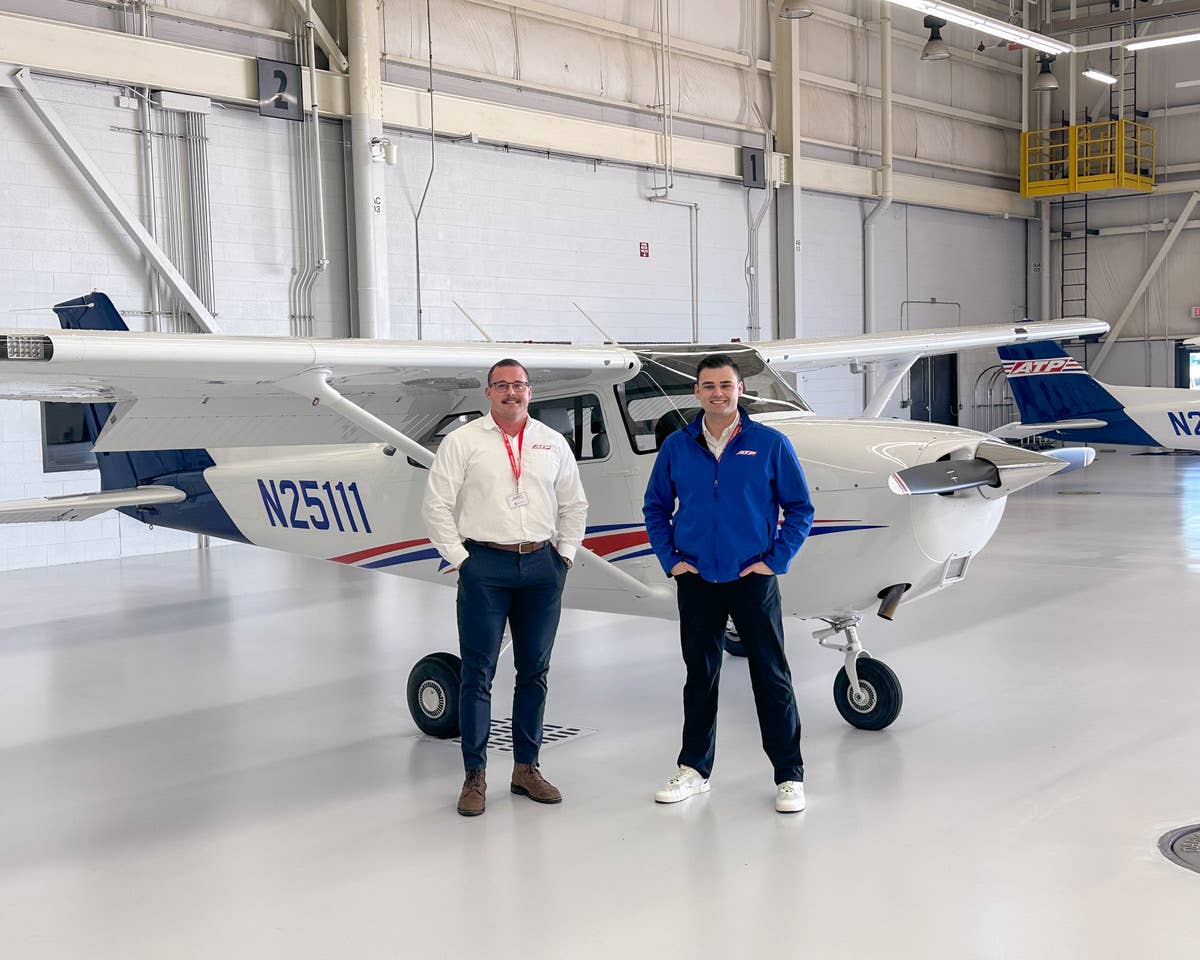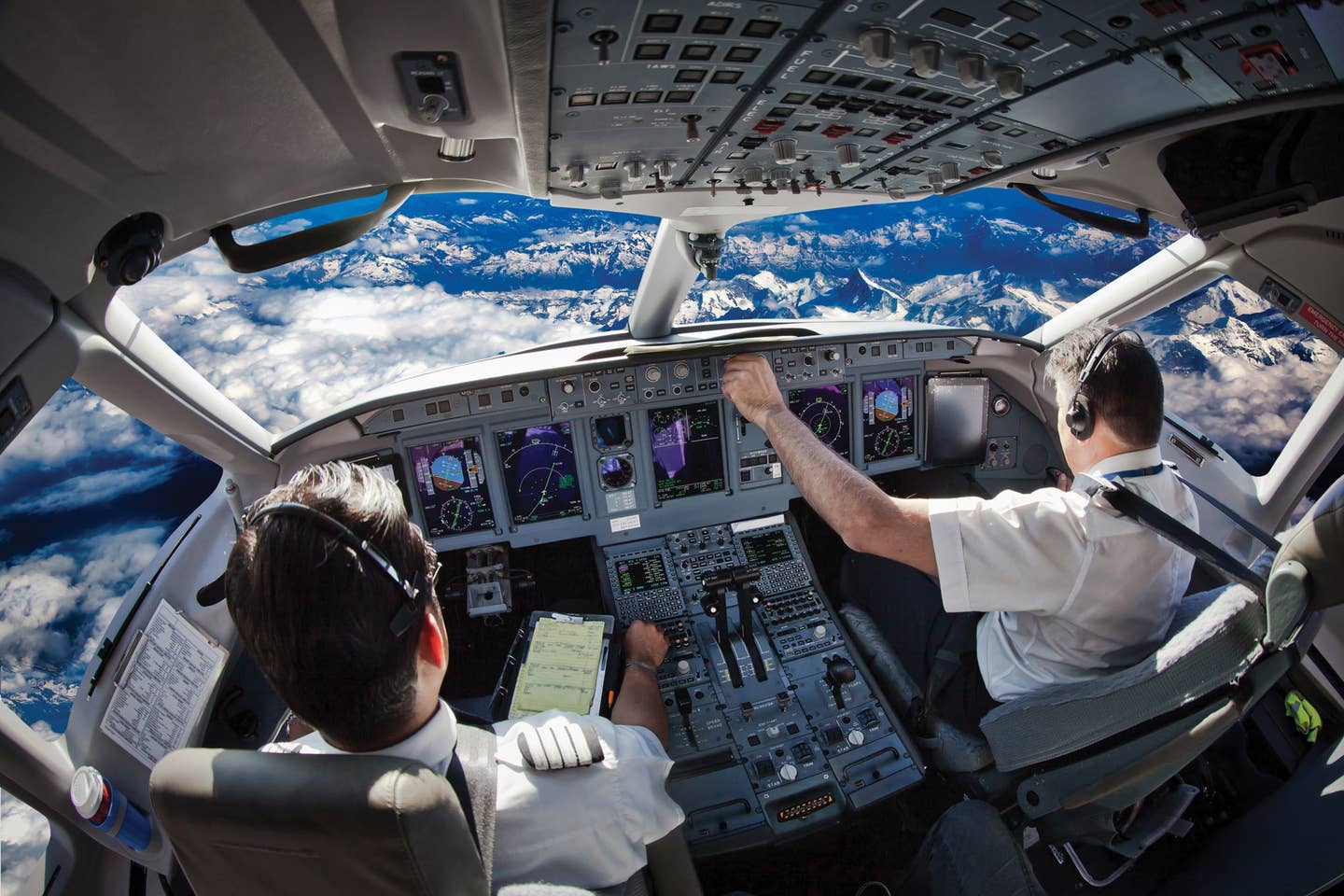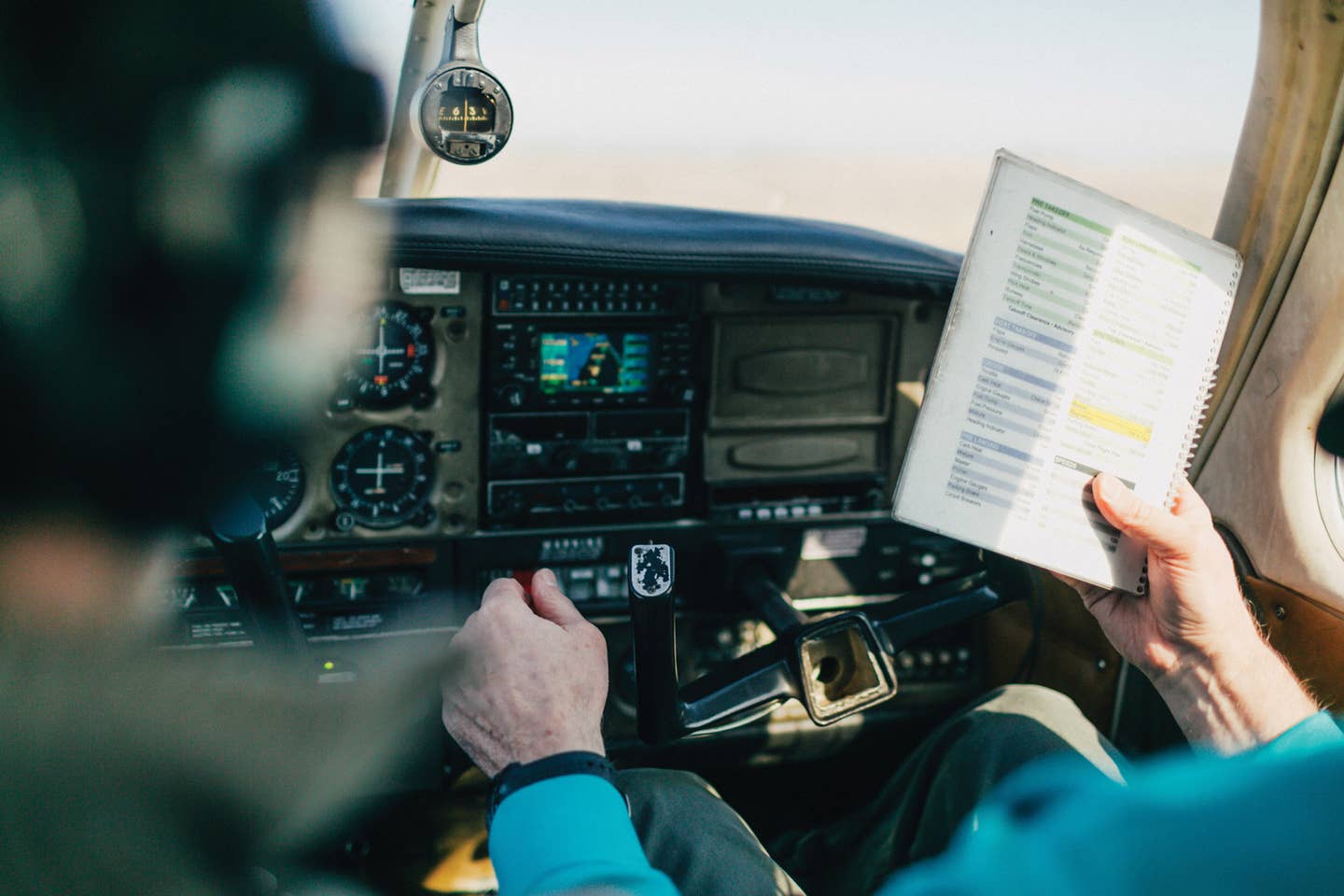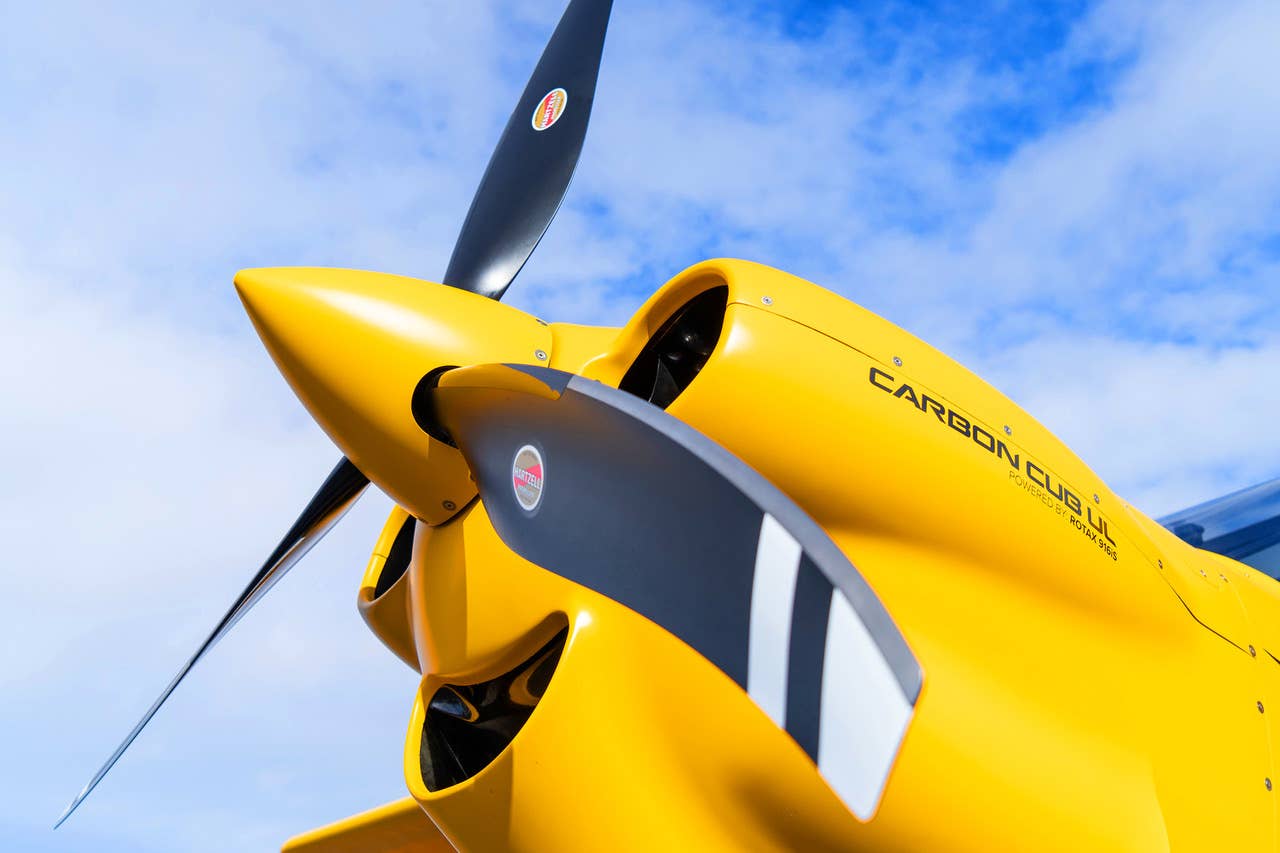Mysteries Of Landing
No, this isn’t the 11,398th story on how to land an airplane
 |
We've all read our share of stories on how to land an airplane, many of them written by pilots with "CFI" after their name. These are usually intended to convince us that the writer has the straight scoop on the proper method to return an airplane to Earth. Right up front, it's important to emphasize that this is most definitely NOT the straight scoop on anything. In fact, I won't be surprised if some CFIs, far more learned than I, take issue with my suggestions. Rather, this is a recounting of lessons learned from making most of the mistakes you can make between entering the pattern and the actual touchdown. In almost 50 years of flying, I've made them all, or at least all that I could come up with. You'd think I had deliberately planned to screw up every possible approach and landing.
Perhaps the amazing thing is that I've never busted an airplane. Well, okay, there was that '76 Piper Lance in Ethiopia back in '98 on its way from Santa Monica to Nairobi, Kenya. The big Lycoming ate a valve four hours out of Djibouti, disassembled itself in about two minutes, and forced me to plant the airplane into the remote Ogaden Desert, harvesting acacia trees as I went.
Certainly, I've had my share of engine failures (Question: What do you do when the engine quits? Answer: Land), 13 at last count. One of them (two of them?) was a double, a Crusader over Tchibanga, Gabon, in 1984, that suffered massive fuel contamination in a fuselage ferry tank and killed BOTH engines within about 10 seconds. (No, there was no sump drain---clients aren't big on drilling new holes in the bottom of the fuselage.) Somehow, I've been fortunate to find airports or unpopulated roads to land on without damage, definitely more luck than skill.
So, for whatever it's worth, here are a few things I've learned---or at least absorbed---over the years. These are experiences that allowed me to get older without growing up, interesting moments that sometimes taught me what not to do.
Brake Failure
It was the first Extra 400 ever ferried across the Atlantic, and my trip north from Aachen, Germany, to Wick, Scotland, and second leg to Reykjavik, Iceland, had been fairly routine. I dropped out of the clouds over Reykjavik at 500 feet on the ILS to see runway 19 straight ahead, partially shrouded by light snow. Out of habit, I tapped the brakes to make sure they were there.
They weren't. I pumped furiously as I neared the ground, but there was no resistance. I touched down more or less normally, but I knew runway 19 at Reykjavik is downhill to a lava field. Without brakes, I'd stand almost no chance of stopping, and would probably leave the airplane in pieces on the lava beach or in the bay beyond.
The only answer was to go around. Predictably, the controller was more than a little surprised---"N400EX, what are you DOING?" I explained my situation, and advised him I planned to orbit out over the bay below the overcast until I could come up with Plan B.
 A blinding sun posed difficulties to Bill Cox on a grass-strip landing in Washington State. |
That didn't take long. Runway 1 was significantly uphill. I touched down as slow and short as I dared, and rolled to a stop before I had covered half the runway. The next day, the Iceland Air mechanics corrected the problem, but discovered the RIGHT set of brakes were working perfectly. Only the pilot's side had failed. Had I used my brain and simply slid over to the right seat, I could have landed normally.
Unusual Approach
Patterns aren't always rectangular. Going into Funchal, Madeira Islands, off the coast of Morocco in the eastern Atlantic 25 years ago, I was flying a new Cessna Crusader twin, and discovered that you sometimes need to land out of a semi-tight turn, and going uphill. Navy pilots used to do that as a matter of course coming aboard carriers with a rolling, pitching deck, but for the rest of us, anything other than a nice, mile-long final approach is considered abnormal.
Funchal's uphill runway is at the apex of a small, semi-circular bay, and the threshold is at beach level, while the opposite end is supported on pylons quite a bit higher. In other words, you fly an arc all the way to touchdown, then initiate an exaggerated flare to avoid touching down on the nosewheel.
I had checked the weather for the Madeira Islands before departure from St. Johns, Newfoundland, Canada, but I hadn't even looked at the approach plate for Funchal, so the unusual approach was a total surprise. Not smart.
Black Ice
I was flying my Bellanca Cruisemaster from California to Florida one year for the Christmas holidays, and decided to RON in Amarillo, Texas. West Texas is famous for its winds, especially in winter, and that year, I was being pushed along by welcome, 40-knot tailwinds. Trouble was, the breeze wasn't so welcome on the ground. It was a gusting crosswind at Amarillo, and it was close to my personal limits, if not the airplane's.
The weather was good, but I was coming into darkness as I turned final and touched down more or less under control. Unfortunately, the runway was partially covered with black ice.
Shortly after touchdown, my trusty taildragger initiated a slow, 180-degree turn, totally out of my control. The airplane then tracked straight down the center of the 300-foot-wide runway---tail first. When I finally came to a stop facing downwind, the controller asked, with just a trace of a smirk in his voice, "Bellanca 85N, do you require any assistance?"
Frozen!
Perhaps conversely, a totally snow-covered runway sometimes can be a blessing. I had departed Bangor, Maine, in the first production Piper Mirage, headed for Germany. It was mid-January, 1989, and the temperature at Bangor was -20 F. At Goose Bay, it was -35 F. At those temperatures, icing usually isn't a problem. Other things are.
When I arrived at Goose, I had trouble getting the right main gear to lock down. After 20 minutes of near-aerobatic maneuvers to put a download on the inside of the right gear, I finally got three greens.
It had been snowing almost continuously for several days, and Goose was having a hard time keeping up with it. They were reporting poor braking action, but fortunately, runway 26 was 11,000 feet long. The winds were gusting to 20 as I lined up on final. I made it a point to touch down right in the middle of the 200-foot-wide runway, hoping I could maintain directional control during the landing.
As it turned out, I had a different problem. Both main-gear brakes were frozen solid. The airplane touched down and immediately began to slide on the snow, with both wheels locked up. Within a few seconds, the left brake released, and the airplane turned hard right. I slammed the left pedal back down, and came to a stop near the indistinct right edge of the runway. The FBO towed me to the ramp with a Sno-Cat.
Gear Won't Lock
Beware the problems of a borrowed airplane. I had been granted the use of a nicely refurbished A36TC Bonanza for a few weeks, and was coming back in to Long Beach after a short flight down from the San Francisco area. As I entered the pattern at KLGB, I selected gear down, and the right main refused to lock. I recycled a half-dozen times, and nothing helped.
I advised the tower of my problem, and left the pattern to work the problem out over the harbor. Fortunately, I was familiar with the manual extension system on Bonanzas, and I turned the small crank the obligatory 37(?) times to get the right main down.
No luck. I flew by the tower, and they advised that the right was extended but didn't look locked down. I checked the ATIS at Long Beach one last time, and found the wind was from 200 at 15, fairly typical for late afternoon.
Accordingly, I asked the tower for runway 12. That would give me a strong right crosswind, and I hoped to touch down right-gear first, and slew the airplane left to lock the right gear in place, knowing full well that was a trick best left to Bob Hoover.
To my utter amazement, it worked---sort of. I got an instant green on touchdown, and allowed the airplane to roll out straight ahead, fire truck chasing behind. I took a right intersection at about two knots, and the right gear partially collapsed. Fortunately, I was taxiing so slowly that the gear only folded 10-20 degrees. The airplane didn't settle onto its right wingtip or take out the prop, and there was essentially no damage.
Blinding Sun
Photographer James Lawrence and I had been assigned to do a story on the Glasair Sportsman 2+2, a great little, homebuilt design that had recently been introduced on the company's "Two Weeks to Taxi" program. Our photo location was Stehekin State Airport in northern Washington, certainly one of America's most beautiful backwoods, grass strips. It's snuggled in a deep valley in the Cascade Range about 70 miles east of Glasair's headquarters in Arlington and 50 miles from the Canadian border. I had been handed the keys to a Sportsman, and told to meet Lawrence and a company pilot in another Sportsman at Stehekin.
After a 45-minute air-to-air session over the magnificent Cascades, the photo ship broke off to land, and I explored the high terrain around the site while they set up for some landing shots.
I lined up for an approach a half-hour later to discover that glare from the sun was making it impossible to see the 2,600-foot-long airstrip in the tall pines that were surrounding Stehekin. I could keep the runway in sight on downwind and most of base, but every time I turned final, the grass strip disappeared behind the 80-foot-tall trees.
The result was a series of go-arounds while Lawrence and the Glasair company pilot wondered what I was doing. After embarrassing myself with a half-dozen aborted approaches, I finally decided to try something new. I extended the base leg to align well past final, so I could angle in on the strip and drop the airplane over the trees without having to look directly into the sun. The touchdown and landing were anticlimactic, but I'll certainly never forget that final approach to Stehekin State Airport.
Bush Mods
And finally, the most impressive landing I've seen, was, predictably, in Alaska. I was sent to Kenai, outside Anchorage, in late April 1988 to pick up a Mooney 252 and bring it back to Long Beach, Calif., for eventual ferry to Glasgow, Scotland. The airplane had been sitting in the snow for three months, and while I was waiting for it to be cleaned up and have the battery charged, the owner of the FBO asked if I was up for a quick trip across the Cook Inlet to one of his hunting cabins.
We jumped into an unlikely looking Cessna 152 converted to a tailwheel, and mounted on two of the biggest balloon tires I'd ever seen on such a little airplane. The interior was mostly stripped out, but there were two seats in the cabin and a surprising 180 hp Lycoming O-360 engine out front to lift the load. We flew the 20 miles across the inlet to a beautiful little stream running strong with the spring breakup. The pilot, Ray Bristol, pointed out his cabin adjacent to a small sandbar, but nowhere near any road or bush strip that I could find.
When I asked Bristol where we were going to land, he smiled and said, "You'll see," and set up an approach to the creek itself. He levered in full flaps (in this case, about 60 degrees), slowed to a speed off the bottom of the airspeed indicator, and touched down in the shallow water just short of the sandbar. The oversized bush tires served as huge, circular pontoons as we powered across the water for 50 feet until we reached the sandbar. Then, Bristol chopped power, dropped the tailwheel to the dirt, and jolted to a stop in a few feet.
After a cup of coffee in his cabin, we turned the airplane around, fired back up, firewalled the throttle out onto the creek bed, and lifted off from the water. The experience was a revelation for me, but this tough old bush pilot had been doing this sort of thing for years, and accepted it as normal.
The next morning, as I filed my flight plan at the FAA office for the Mooney's first leg down to Sitka, the briefer asked casually if I was the one who had been flying with Ray Bristol the day before. I said yes, and started to tell him about the flight, but he cut me off and said he didn't want to hear anything about the airplane. He explained that everyone around the airport knew the 152 was totally adlibbed, with at least a half-dozen illegal mods, but Bristol had been flying it that way for years, and no one seemed to mind as long as "he didn't make anyone fill out any paperwork."
In retrospect, I'm not sure how many lessons these experiences have taught me. If nothing else, however, they've convinced me that no landing is a slam dunk, no matter how many times you may have done it before at the same airport and in the same airplane.

Subscribe to Our Newsletter
Get the latest Plane & Pilot Magazine stories delivered directly to your inbox






